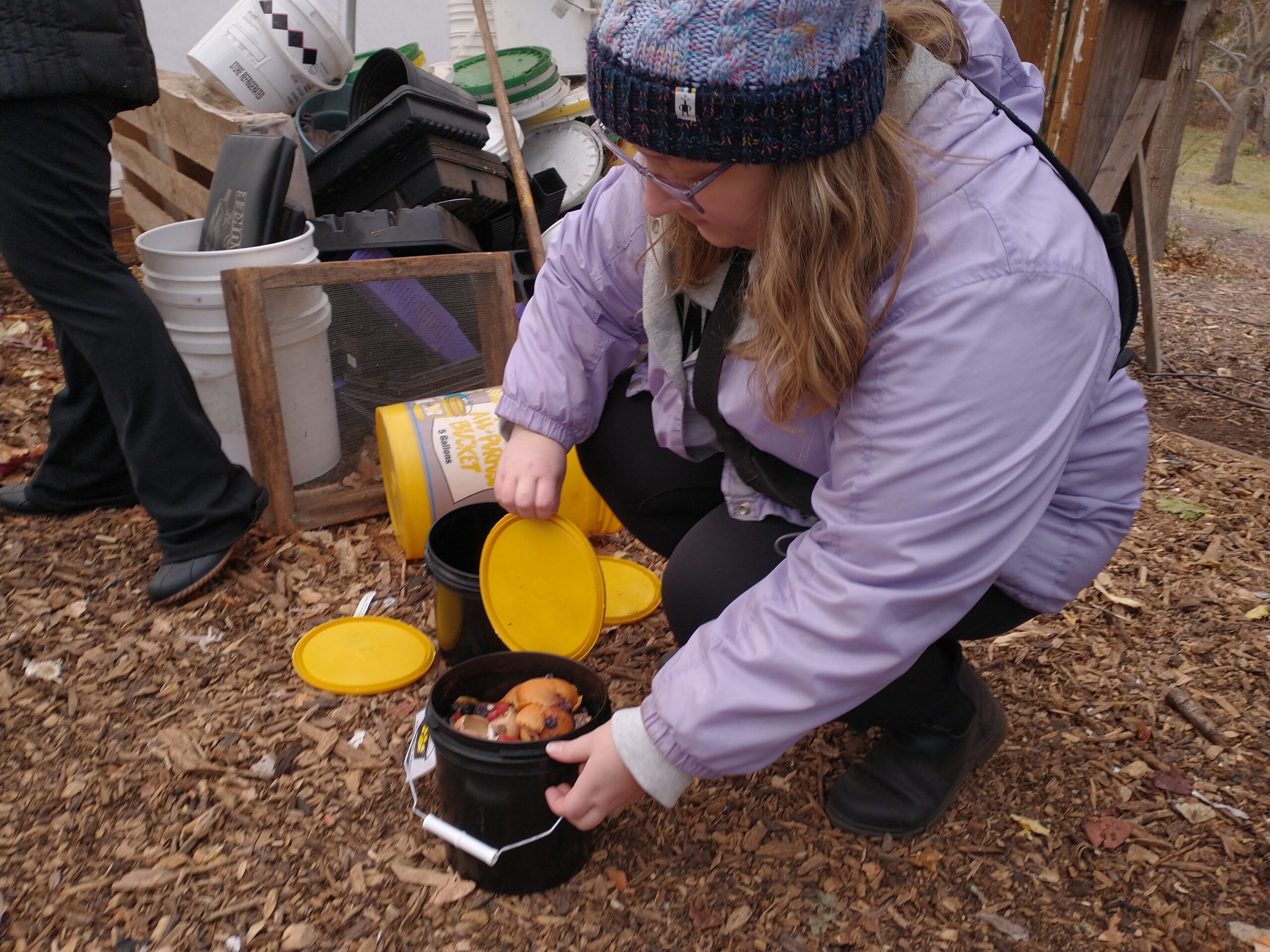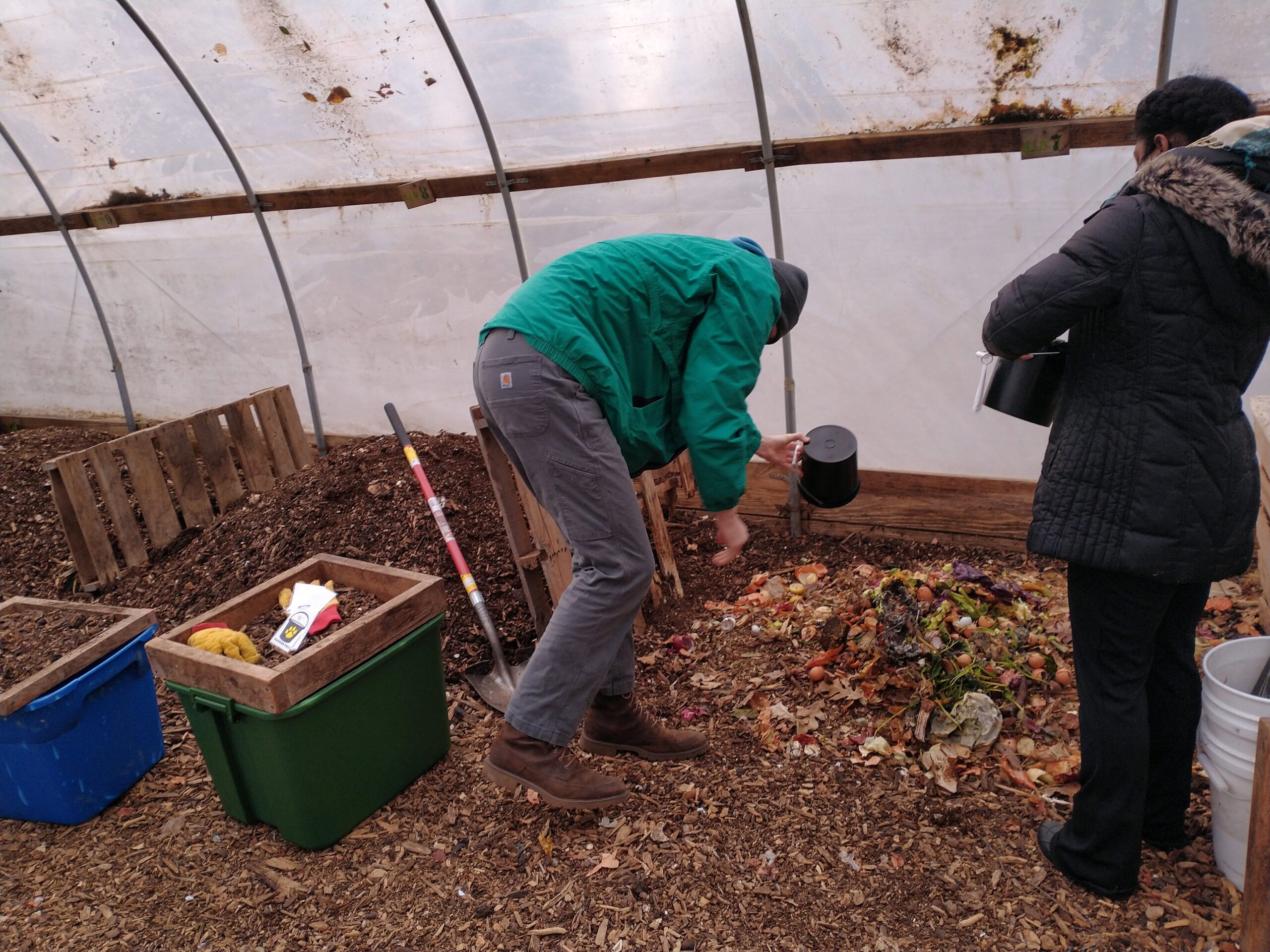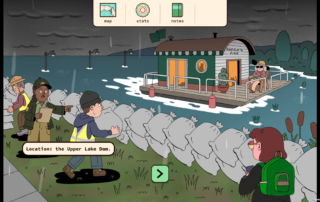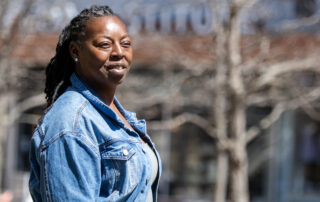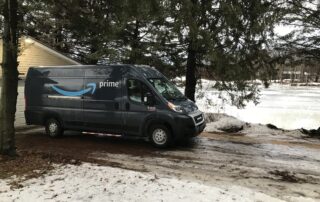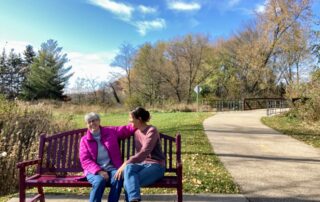University of Wisconsin-Milwaukee students have been helping turn food waste into nutrient-rich soil. A new program called Panther Pails brings food scraps to the composting operations at the Sandburg Gardens Hoop House.
===
Pineapple tops, orange peels and onion skins lay scattered in mounds of wood chips. We’re inside the Sandburg Gardens Hoop House. It resembles a greenhouse, but the steel structure covered in translucent plastic is more of a tunnel. A large bin just outside holds black pails with yellow covers ‒ UWM’s school colors. They’re filled with coffee grounds, vegetable scraps and egg shells waiting to become soil nutrients.
Nina Hartwig of UW-Milwaukee’s Office of Sustainability manages gardening and compost operations, including one called Panther Pails.
“I just wish more people knew that it existed,” Hartwig said. “No one knows that the Hoop House really exists, let alone the Panther Pail program.”
Panther Pails gives students and staff an opportunity to participate in composting without needing to make their own. Anyone living on or off campus can fill a pail with food scraps, and drop it off at the Hoop House.
“Most of the food waste that we get comes from the Sandburg Cafe, but the reason we started Panther Pails is because when the pandemic hit we weren’t getting any food scraps at all,” she said. “So we had to kind of find a way to generate some, so we kind of just turned to our UW-M community to see if they could help us out … we actually have 70 people signed up so far since launching last year in November, and we’ve collected I think 350 gallons of food waste from them.
Ian Gallagher is a senior studying biology and conservation & environmental science. He’s one of two student workers at the Hoop House.
“It’s actually a lot of fun. You get to get a little dirty sometimes and turn the piles,” he said. “It’s really satisfying seeing your work actually become something.”
Food scraps are excellent nitrogen sources, but a compost pile also needs carbon. Hartwig said they supply that element by adding equal amounts of wood chips as they do food waste. Gallagher pointed out how the wood chips become rounded and softer after going through composting. It’s similar to how water breaks down the sharp edges of rocks, creating smooth stones over time.
Workers turn the piles every two weeks ‒ this adds air and generates heat. The overturned concoction of plant matter looks charred as if a fire had been burning. But Hartwig said that ash-like appearance is actually millions of microorganisms.
“They’re the real people who do the job,” she said. “They put in all the hard work.”
Gallagher said most of the heat is at the top of the pile.
“As it ages and starts to cool down a little bit, the center holds most of the heat — the top and the sides really cool down,” he said. “It’s interesting to see what the pile is doing, it feels like a living and breathing organism.”
The air inside the Hoop House feels at least a few degrees warmer than outside. This isn’t surprising once you realize how much heat an active compost pile generates. When a student employee stuck a specialized composting thermometer into one of the piles, the needle moved into the green colored zone, representing the ideal composting range of between 90 and 130 degrees Fahrenheit.
“Composting is really important, especially just to get the nutrients back into the soil,” Hartwig said. “Sending food waste off to a landfill and having it never break down and having none of the nutrients ever go back into our soil systems is a real issue, actually.
“Being able to help the soil get its nutrients back and to grow great produce is, I think, really important,” she continued.
One of the final steps in the composting process involves sifting a pile through a sieve to remove the wood chips.
The wood chips are reused and put into new piles, Hartwig said.
“They already have all of the microorganisms all over them so it kind of helps jumpstart the other one that we are making,” she said.
The entire process takes six to seven months before soil can be used on campus. Hartwig needs to have 58 five-gallon buckets of soil ready for use in rentable garden plots by the end of spring semester.
“My number one tip if you’re going to do Panther Pails is to put it either in your freezer or in your fridge just to kind of avoid the smell,” she said. “Composting at home is actually a lot easier than you think, especially if you have a resource. You’d be surprised at the amount that you get rid of and how you don’t have to take your trash out as often if you’re composting.”
